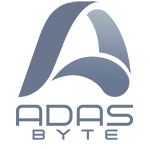One-dimensional (1D) element analysis is a widely employed approach for structural analysis, characterized by its relative simplicity compared to the more intricate two-dimensional (2D) and three-dimensional (3D) analyses, which demand more extensive iterations and time to attain optimal outcomes. The selection of an appropriate element type hinges on the specific structural behavior under consideration. For comprehensive structural analysis, the choice between beam or truss elements depends on the structural behavior exhibited. In the context of cable structure analysis, the cable element or tensioned tie rod element serve as effective models for cable behavior. On the other hand, in scenarios involving the connection between two elements, such as bolted connections, the compression link element and linear spring element can be employed to achieve optimal results for these connections behavior. This article aims to provide a detailed exploration of the behavior and applications of each element available within the WinDas Workstation.
The Beam element is grounded in the principles of the Timoshenko Beam Theory, as formulated by Timoshenko. This theory addresses the flexural behavior of moderately thick and thick beams, taking into consideration the impact of shear deformation and rotatory inertia. It offers a total of 6 degrees of freedom (DOF), making it possible to analyze axial, shear, and moment forces within the structure. This element type is particularly well-suited for elements subjected to significant axial and bending loads, such as columns and beams, and is recognized for its reliability in such applications
On the contrary, the Truss element is particularly proficient at faithfully representing structures that exclusively experience axial forces, such as truss systems and space frames. With its 3 degrees of freedom (DOF), it inherently lacks the capacity to account for moments during the analysis. Consequently, a comprehensive understanding of the structural behavior is imperative when employing the Truss element for analysis.
Another commonly utilized element type in engineering analysis, serving as complementary components for structural systems, includes the Cable element and the Tensioned Tie Rod element. These elements are purpose-built to exclusively handle tensile forces, with the Cable element featuring 3 degrees of freedom (DOF) and the Tensioned Tie Rod element having 6 DOF. The judicious selection of the appropriate element type for cables is vital to establish the precise unstressed length. These elements are applied in a variety of contexts, including securing cables to membranes, acting as bracing elements in frame structures, and supporting suspension cables for bridges.
Additionally, careful consideration must be given to the connections between two elements, such as bolted connections. The Compression Link element and the Linear Spring element offer effective modeling solutions for these connections, yielding accurate results. The Compression Link element is endowed with 6 degrees of freedom (DOF), while the Linear Spring element is limited to 3 DOF. The choice of which element to use depends on the type of connection, whether it be a pinned or moment connection. The Linear Spring element is well-suited for pinned connections, like fin plates, whereas the Compression Link element is more appropriate for moment connections, such as cruciform connections. A comprehensive understanding of connection behavior is imperative when working with these elements.
In summary, Windas Workstation represents a robust engineering software capable of modeling the overall structural behavior encompassing elements like beams, columns, and cables, as well as specific connections such as bolted and welded connections. Notably, there are substantial differences in the results obtained when utilizing elements with 3 degrees of freedom (3 DOF) and those with 6 degrees of freedom (6 DOF). Therefore, a comprehensive understanding of both the structural behavior and the nuances of connections is essential prior to commencing any analysis.




